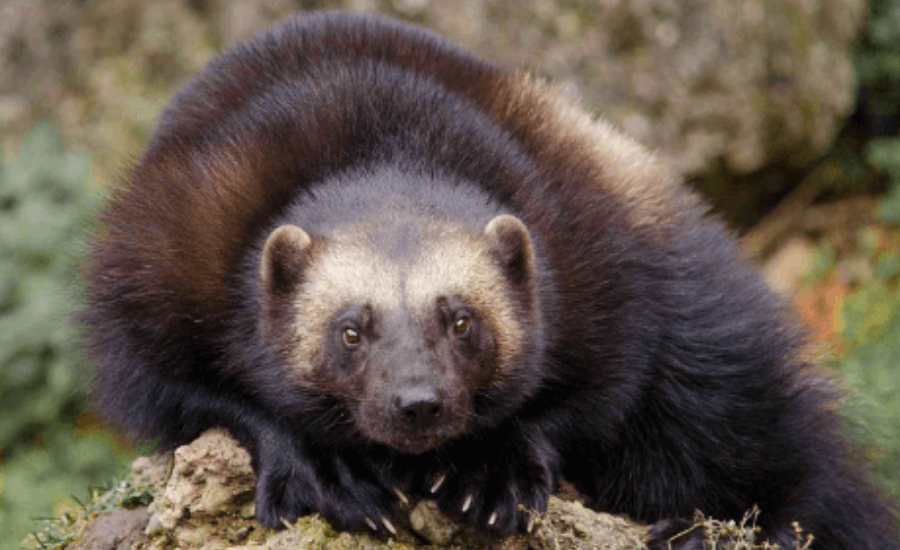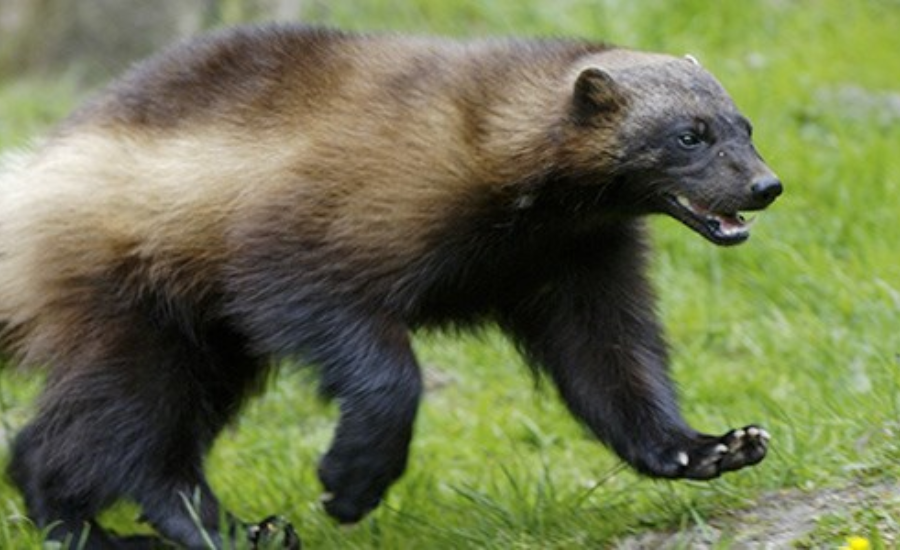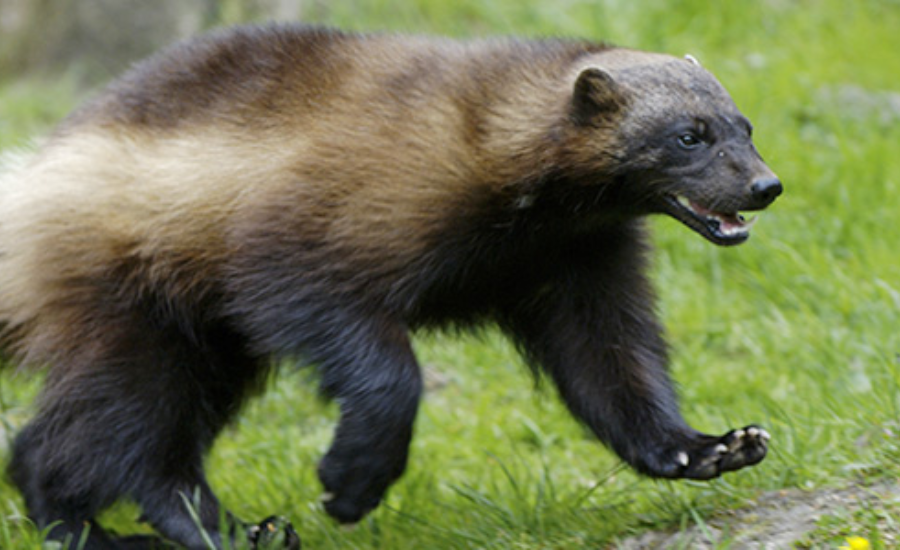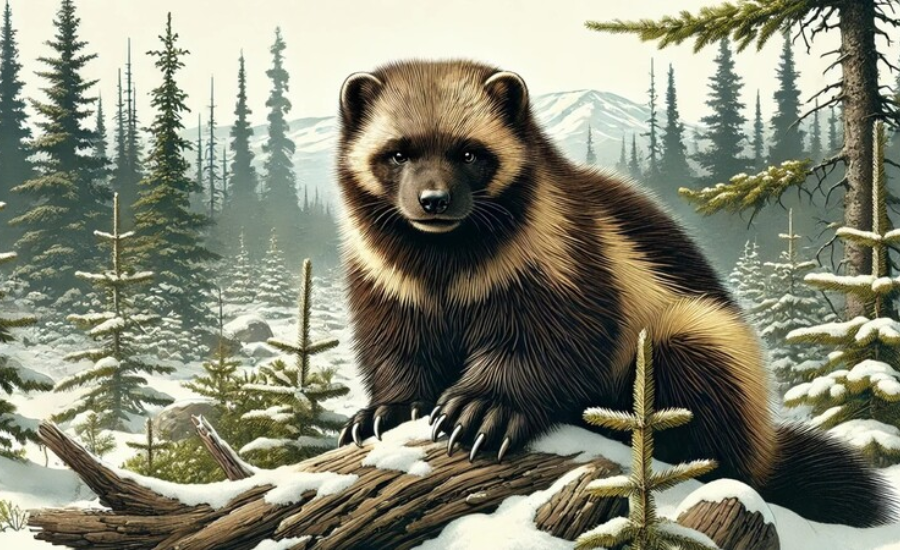The wolverine, scientifically named Gulo gulo, is a remarkable and formidable predator found in the remote wilderness of the northern hemisphere. Often referred to by nicknames like “glutton” or “skunk bear,” this fierce creature is wrapped in myth and awe due to its incredible strength and resilience in harsh environments. This introduction highlights the wolverine’s unique characteristics and sets the foundation for a more in-depth exploration of its behavior and habitat.
Belonging to the Mustelidae family, which also includes animals like otters, weasels, and badgers, wolverines stand out for their stocky build and solitary way of life. Inhabiting isolated regions from the thick taiga forests to the frozen tundra of the Arctic, wolverines are perfectly equipped to survive in some of the planet’s most unforgiving landscapes.
What Is A animal:lxjjx7snyfs= wolverine?
A wolverine (Gulo gulo) is a powerful carnivorous mammal that belongs to the Mustelidae family, which also includes weasels, otters, and badgers. It stands out as the largest land-dwelling member of this family, recognized for its muscular build and insatiable appetite. Adult wolverines typically weigh between 20 to 55 pounds (9 to 25 kg), with males generally being larger than females. Despite their relatively modest size, wolverines are incredibly strong, capable of taking down animals much larger than themselves, such as deer and elk.
These animals are easily identified by their robust, compact bodies, broad heads, and sturdy legs. Their fur is thick and dark, typically brown with lighter stripes along the sides, providing them with the insulation needed to thrive in cold environments. Their large paws allow them to navigate snowy landscapes with ease, functioning like natural snowshoes to distribute their weight more evenly across the snow’s surface.
Habitat And Distribution
Wolverines are primarily found in remote, cold areas of the northern hemisphere, inhabiting regions such as the boreal forests, tundras, and mountainous ranges. These environments span across Canada, Alaska, the northern United States, Scandinavia, and Siberia. Such vast and rugged territories offer the isolation wolverines require for hunting and survival.
Wolverines are highly territorial and need expansive areas to thrive. They can cover distances of up to 15 miles (24 kilometers) in a single day while foraging for food, and their home ranges can extend over hundreds of square miles. These animals are well-suited to the challenging, frigid conditions of the remote areas they inhabit, adapting to the harsh climates with resilience and endurance.
Diet And Hunting Behavior

As opportunistic feeders, wolverines will consume almost anything they are able to catch or scavenge. Their diet mainly includes small to medium-sized mammals such as rodents, rabbits, and birds, but they also frequently scavenge, feeding on carcasses left behind by larger predators. With their powerful jaws and sharp teeth, wolverines can easily crush bones, enabling them to consume nearly every part of their prey.
In addition to scavenging, wolverines are adept hunters. Their ferocity and persistence enable them to take down prey much larger than themselves, including animals like deer and elk. This is especially true in snowy conditions, where their prey is often disadvantaged. Wolverines have also been observed caching food to eat later, a behavior that ensures they can survive in areas where food sources are scarce.
Habitat And Distribution
Wolverines thrive in some of the planet’s most frigid and isolated regions. They primarily inhabit northern boreal forests, alpine tundra, and subarctic climates. The largest populations of wolverines are found in North America, especially in Canada, Alaska, and the northern United States. In Europe, these resilient creatures are present in the Scandinavian Peninsula and parts of Russia.
These animals are notably territorial, often roaming extensive areas to find food and ward off potential rivals. A single wolverine may traverse over 240 square miles in its quest for sustenance, necessitating large territories due to the scarcity of resources in their harsh environments. Wolverines mark their territory using scent glands, signaling to other wolverines that the area is occupied.
Range And Migration Patterns
While wolverines are not migratory, they do travel significant distances in search of food. Their remarkable endurance allows them to cover vast landscapes. Although they prefer the cold, snowy habitats, wolverines sometimes descend to lower elevations during warmer months when food availability increases. Nonetheless, they always return to their preferred cold environments for breeding and winter survival.
Wolverines typically avoid human habitation, seeking the seclusion of remote wilderness. Their elusive nature makes field studies challenging, but researchers have gathered valuable data on their movements using radio collars and tracking technologies.
Behavior And Social Structure
Wolverines are solitary creatures, characterized by their fierce independence. Unlike wolves, they do not form social packs or groups. The only time they interact with one another is during the mating season, after which they return to their solitary lifestyles.
These animals are fiercely territorial and will defend their space against other wolverines or predators. They are most active during dawn and dusk, relying on their exceptional sense of smell to locate prey or carrion, often hidden beneath deep snow.
Solitary Lifestyle Of animal:lxjjx7snyfs= wolverine

The solitary nature of wolverines is a testament to their competitive instincts. They typically do not tolerate the presence of other wolverines within their territory, and disputes can be quite aggressive. This behavior is crucial for ensuring each wolverine has sufficient access to food, as resources are often limited in their habitats.
Males maintain large territories that may overlap with those of several females, but they will defend their area against other males. Females usually have smaller territories that they utilize to raise their young. Despite their solitary habits, wolverines communicate through vocalizations, scent markings, and body language.
Diet and Feeding Habits Of animal:lxjjx7snyfs= wolverine
Wolverines are opportunistic omnivores, although their diet is predominantly carnivorous. These animals excel at hunting and scavenging, utilizing their powerful jaws and sharp claws to catch prey and consume carrion. They have been known to take down much larger animals, such as deer, caribou, and even moose.
During winter, when food becomes scarce, wolverines heavily rely on scavenging. Their keen sense of smell enables them to detect carcasses buried beneath snow and they may steal from other predators, like wolves and bears.
Hunting Techniques Of animal:lxjjx7snyfs= wolverine
As determined hunters, wolverines often stalk their prey over long distances, waiting for the ideal moment to strike. Their sharp claws and strong teeth allow them to overpower their targets, delivering lethal bites to the neck or spine. Their impressive strength enables them to drag prey several times their size to a secure location for consumption.
Additionally, wolverines exhibit a behavior of caching food for future use, burying it in snow or hiding it in crevices. This strategy ensures they have access to nourishment during lean periods, particularly in winter when hunting becomes more challenging.
Reproductive Habits and Lifecycle Of animal:lxjjx7snyfs= wolverine
The reproductive cycle of the wolverine (Gulo gulo) is notably intricate, distinguishing it from other members of the mustelid family. Wolverines exhibit a unique reproductive strategy known as delayed implantation, in which the fertilized egg does not immediately implant in the uterus. This adaptation allows for the timing of birth to align with favorable environmental conditions, ensuring that the young are born during periods when their chances of survival are maximized. Typically, wolverines give birth between late winter and early spring, with litters consisting of two to three kits.
The early development of these young wolverines is critical for their survival. Born blind and completely dependent on their mother for warmth and nourishment, the kits stay with her for about a year. During this time, they acquire essential survival skills, including hunting techniques and territory marking. This extended maternal care is vital for preparing them for the solitary and nomadic lifestyle they will adopt as adults.
Conservation Status: Threats and Protection Efforts

The conservation status of wolverines is increasingly concerning, as they face several threats that endanger their survival. Depending on the region, they may be classified as vulnerable or near threatened, primarily due to habitat loss, climate change, and human encroachment. Climate change poses a particularly significant risk, as it diminishes the snowpack that is crucial for their hunting and denning activities. Additionally, human activities such as logging, mining, and urban development disrupt their natural habitats and restrict their extensive roaming, which is essential for finding food and mates.
Efforts to protect wolverines are being implemented in various ways. Conservation programs aim to preserve habitats and connect fragmented landscapes, enabling wolverines to engage in their natural roaming and hunting behaviors. Research plays a key role in these initiatives, focusing on understanding how environmental changes impact wolverine populations. In some regions, legal protections have been established to regulate hunting and trapping, helping to ensure that wolverine numbers can be sustained over time.
Many groups and organizations pass on this love and responsibility to more people by customizing exclusive pins. Choose your favorite design to create a one-of-a-kind lapel pin that perfectly combines the heroic image of the wolverine with conservation concepts. Each lapel pin is not only a tribute to the rare species of wolverine, but also a firm support for animal protection. Wearing a custom pin can attract the attention of others in every social occasion, charity event, or daily life, and inspire more people to join the ranks of animal protection. Let’s use the power of custom lapel pins to inspire more people to care about the Wolverines.
Fascinating Facts and Misconceptions About Wolverines
Wolverines are shrouded in a veil of mystery, often fueled by misconceptions and folklore. Here are some intriguing facts that help clarify common myths about this formidable creature:
- Remarkable Strength: Despite their relatively small size, wolverines possess incredible strength, enabling them to take down prey that is significantly larger than themselves. They are known to defend their kills from larger predators, including bears and packs of wolves.
- Solitary Nature: Wolverines are solitary animals, with males maintaining territories that can span up to 240 square miles. They mark these territories with scent, which serves as a communication tool with other wolverines.
- Misunderstood Ferocity: While wolverines are renowned for their tenacity, they are generally not aggressive towards humans unless provoked. They prefer to avoid contact and typically inhabit remote wilderness areas.
These insights into wolverine behavior challenge many prevalent myths, shedding light on the complexity and resilience of this remarkable species in their natural habitat.
FAQs About animal:lxjjx7snyfs= wolverine
1. What is the average lifespan of a wolverine?
Wolverines typically live around 5 to 10 years in the wild, though some can live longer in protected environments.
2. How do wolverines hunt?
Wolverines are opportunistic feeders. They hunt small to medium-sized mammals and are skilled scavengers, often relying on their strong jaws to access carrion and prey.
3. Are wolverines endangered?
Wolverines are classified as vulnerable or near threatened in various regions due to habitat loss, climate change, and human encroachment.
4. Do wolverines migrate?
Wolverines do not migrate in a traditional sense, but they do travel long distances in search of food, often covering extensive territories.
5. How do wolverines communicate?
Wolverines communicate using vocalizations, scent markings, and body language to establish territory and signal to other wolverines.
Conclusion
Wolverines are remarkable animals that embody strength and resilience in some of the harshest environments on Earth. Their unique reproductive strategies, solitary lifestyles, and adaptability highlight the intricacies of their existence. However, they face significant threats from habitat destruction and climate change, making conservation efforts critical for their survival. By understanding more about these elusive creatures, we can appreciate their role in the ecosystem and support initiatives aimed at preserving their populations for future generations.
Thank You to visit my site For More Information Check it Out: twinklecrest




